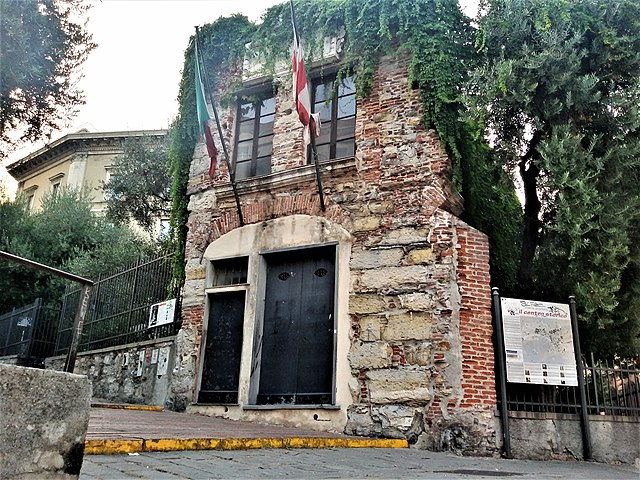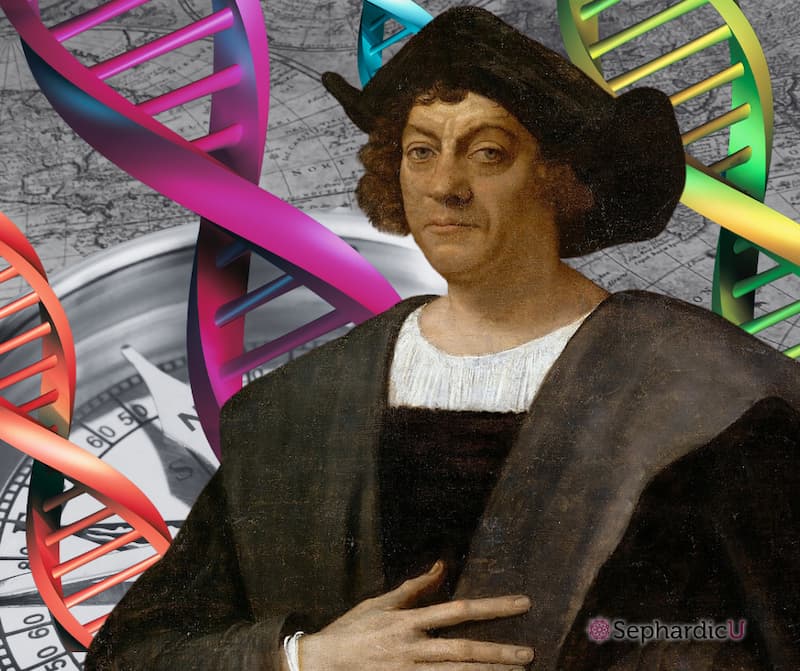Introduction: Unraveling a Historical Mystery
The identity of Christopher Columbus, one of history’s most prominent explorers, has intrigued historians for centuries. Recently, a groundbreaking study has challenged long-held beliefs about his origins, revealing that Christopher Columbus was a Sephardi Jew from Western Europe. This discovery, based on extensive DNA analysis, not only reshapes our understanding of Columbus but also adds a fascinating layer to the history of Jewish people during the Age of Exploration.
Historical Background: Columbus and His Era

Christopher Columbus was born in 1451, likely in Genoa, Italy, during a period marked by religious upheaval and intense exploration. The late 15th century was pivotal for Europe, as nations sought new trade routes and territories. Columbus, motivated by the desire to find a westward route to Asia, sought funding from the Spanish monarchy. After years of persistent efforts, he secured sponsorship from King Ferdinand II and Queen Isabella I, leading to his first voyage in 1492.
Columbus’s expeditions were significant not just for their geographical discoveries but also for their cultural impact. His arrival in the Americas initiated a wave of European colonization, which would lead to the dramatic transformation of the New World. However, his legacy is complex, intertwined with themes of exploration, exploitation, and the enduring impact on indigenous populations.
The Research: A 22-Year Investigation
The recent study, led by forensic expert Miguel Lorente, took over two decades to complete. The investigation focused on DNA samples from remains believed to be those of Christopher Columbus, housed in Seville Cathedral. By comparing these samples to the DNA of known relatives, Lorente and his team aimed to uncover the truth behind Columbus’s lineage.
The researchers found that both the Y chromosome and mitochondrial DNA of Hernando Colón, Columbus’s son, exhibited genetic markers indicative of Jewish ancestry. This significant finding suggests that Christopher Columbus was indeed a Sephardi Jew, challenging the traditional narrative that placed him solely within the context of Italian heritage.
The DNA analysis employed cutting-edge techniques, including genealogical DNA testing and comparison with existing Jewish genetic profiles, making the findings both compelling and reliable. The study’s results were shared through a documentary aired on Spain’s national channel TVE, igniting further interest in Columbus’s heritage .
Understanding Sephardic Heritage
The term “Sephardic” originates from “Sefarad,” the Hebrew word for Spain. Sephardic Jews have a rich and diverse heritage characterized by unique customs, traditions, and languages. Before the Alhambra Decree of 1492, which mandated the expulsion of Jews from Spain, approximately 300,000 Jews lived in the country, contributing to its cultural and economic life. Many were forced to convert to Christianity, while others sought refuge in different parts of Europe and the Ottoman Empire.
Sephardic culture is marked by its distinct culinary traditions, music, and the Ladino language, a blend of Hebrew and Spanish. Understanding Columbus’s connection to Sephardic heritage not only enriches the historical narrative of his life but also highlights the broader context of Jewish existence during a period of persecution and diaspora.
Alternative Theories: Challenging Traditional Narratives
The belief that Columbus was Italian has been prevalent for centuries, but various alternative theories have emerged, suggesting he may have been of Greek, Basque, or even Portuguese descent. These competing narratives reflect the complexities of Columbus’s identity and the socio-political dynamics of his time.
Lorente’s DNA findings suggest that Christopher Columbus was a Sephardi Jew, challenging previous theories about his origins. These results have significant implications, pushing historians to reconsider the traditional accounts of Columbus’s identity. This discovery highlights the diverse cultural influences that shaped Columbus’s life. It also encourages a deeper understanding of the interactions between different cultures during the Age of Exploration, leading to a richer historical narrative of this period.
Timeline of Key Events

| Year | Event |
|---|---|
| 1451 | Christopher Columbus is born. |
| 1479 | Columbus proposes his westward voyage to the Spanish crown. |
| 1492 | Columbus embarks on his first voyage to the Americas, making landfall in the Bahamas. |
| 1492 | The Alhambra Decree expels Jews from Spain, leading to mass migrations. |
| 1506 | Columbus dies in Valladolid, Spain, with a desire to be buried in Hispaniola. |
| 1542 | Columbus’s remains are moved to Hispaniola. |
| 1795 | Columbus’s remains are transferred to Cuba. |
| 1898 | Columbus’s remains are believed to be interred in Seville Cathedral. |
| 2024 | Study reveals Columbus’s Sephardic Jewish heritage. |
The Final Resting Place: Seville Cathedral

Columbus died in 1506 in Valladolid, Spain, after several voyages across the Atlantic. His wish was to be buried in Hispaniola, the island he had first encountered during his voyages. His remains underwent several relocations—first to Hispaniola, then to Cuba, and ultimately to Seville Cathedral in 1898.
The DNA study confirmed that Columbus’s remains are in Seville Cathedral, reinforcing its historical importance. This cathedral, a key symbol of Spanish history, now holds greater significance as the final resting place of Columbus. His legacy is closely tied to both Jewish heritage and the European exploration of the Americas. This discovery links Columbus’s identity to global exploration and religious history, marking the cathedral as a site where cultural and historical narratives intersect.
Impact on Historical Discourse
The discovery that Columbus was a Sephardi Jew changes how we view his legacy and identity. This revelation challenges previous historical assumptions and urges scholars and the public to reassess our understanding of well-known figures. It highlights how some identities may have been hidden or misrepresented over time.
The study underscores the value of inclusive historical research that recognizes the complex backgrounds of influential figures. It urges us to reconsider Columbus’s significance not only as an explorer but also as a representation of cultural intersection during a transformative period in history. This approach offers a more nuanced view of his contributions.
Notable Accomplishments of Columbus
- Discovery of the New World: Columbus’s voyages in 1492 led to the European discovery of the Americas, initiating a period of exploration and colonization.
- Establishment of Spanish Colonies: His expeditions laid the groundwork for Spanish settlements, significantly impacting the course of history in the New World.
- Cultural Exchange: Columbus’s journeys initiated a cross-cultural exchange, influencing trade, agriculture, and societal structures in both Europe and the Americas.
- Navigational Innovations: His voyages advanced navigational techniques and contributed to the development of maritime exploration.
Conclusion: Embracing Complexity in History
The results of this study force us to rethink Columbus’s identity as a Sephardi Jew. He lived in a world shaped by religious and cultural conflict. By recognizing the intricacies of history, we better understand the diversity that shaped our world. Columbus’s Sephardic origins enrich our understanding of his legacy. They also highlight the important contributions Jewish individuals made to exploration and culture during a pivotal time in history.
References
- “DNA study resolves centuries-old mystery: Christopher Columbus was a Sephardi Jew.” ILH Staff, 2024. ILH.
- “Who Was Christopher Columbus? His Life, Voyages, and Legacy.” History.com Editors, 2024. History.
- “Sephardic Jews: A Brief History.” Jewish Virtual Library. Jewish Virtual Library.








Ohr HaChaim Yomi – Emor